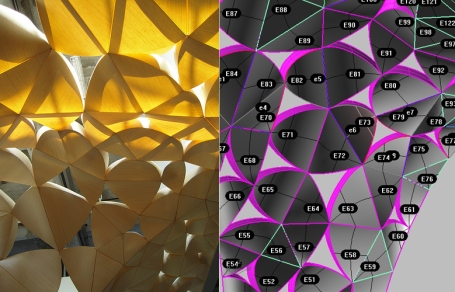
all photos by Stephanie Lin
Chris Chalmers, of BIOS design Collective, was hired as a scripting consultant by San Francisco firm Iwamoto-Scott (ISAr) for their Voussoir Cloud installation at the SCI-Arc Gallery, opening August 8th.
From ISAr’s description of the project :
“Voussoirs, the wedge shaped masonry blocks that make up an arch, are redefined in Voussoir Cloud using a system of three-dimensional modules formed by folding paper-thin wood laminate along curved seams. The curvature produces a form that relies on the internal surface tension to hold its shape and allows for a structural porosity within the constraints of sheet material. The resulting dimpled, concave modules pack together; naturally creating vaulted forms with a light porous surface. The form-finding exploration of the whole is thus dependent on the geometric performance of the individual units and their relation to the gallery walls.Voussoir Cloud intentionally confuses the structural and material strategies. By beginning with a material operation, the design process is focused on calibrating the relationship of digital model to physical result. Working closely with IwamotoScott, SCI-Arc students will assist in the design, construction and installation of the work.”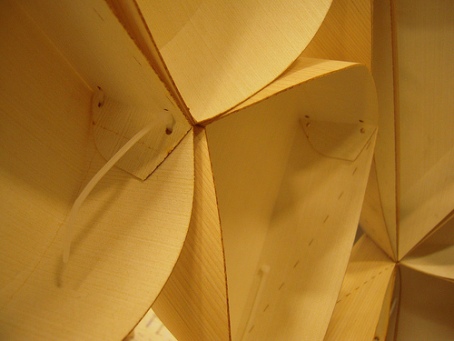
close-up showing the method of attaching flaps, folded behind the units.
Chris worked with ISAr to develop a script in Rhinoceros that would model each piece in response to its local surroundings. The script determined the exact seam curvature required to yield the proper shape, based on the curvature of the overall surface, as well as size and proximity of adjacent pieces.
Fabrication of the Voussoirs depended on a radically new conception of ruled surface construction. As stated in ISAr’s description above, the camber of each piece is held by folding its side flaps back along a curved seam. The flaps attach to each other with tabs at the edges (see image above) and hold the piece in curved tension, forming a module rigid enough to transfer compressive forces along the overall surface. This method, combined with the triangular shape of each piece, has the unique quality of creating a doubly-curved surface using only single-curved laser-cut sheet material.

typical ruled-surface application: surfaces cut separately and joined at seam to yeild desired shape.
Ruled surface fabrication usually involves “lofting” two or more adjoining singly-curved shapes, mapping them onto a 2D plane, and cutting them out of sheet material. The material is then bent and joined at the seams, producing the originally modeled 3D shape (example above). This method is widespread in many existing 3D modeling software packages, especially those tailored for the boat building industry like lamina.
What makes ISAr’s approach unique is the use of folded seams to produce complex curvature from a single piece of sheet material. To achieve this, ISAr needed to be very demanding in their requirements for the script: that it take both folded and flattened states into account to generate a precise seam profile. The script that Chris wrote generated over 2000 unique pieces in three different types: triangles with 3 straight edges and no curvature, triangles with one or two curved edges and single-curvature, and triangles with three curved edges and double curvature (shown below).

ISAr’s ruled-surface method: cutting and scoring template generated so that folding along crease lines will yield the desired curvature.
More close-up photos of the modules:


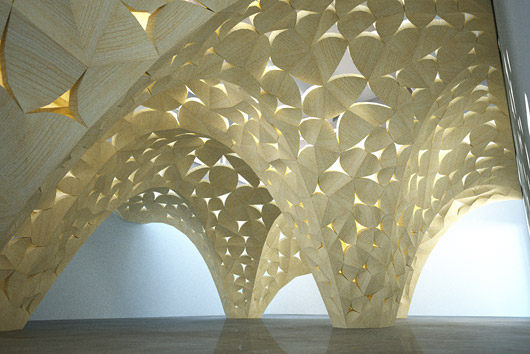
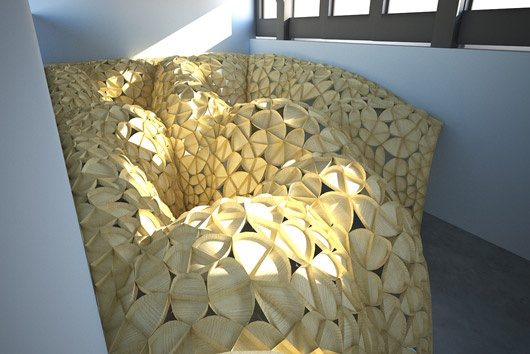
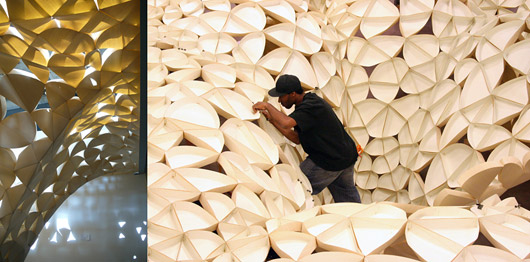
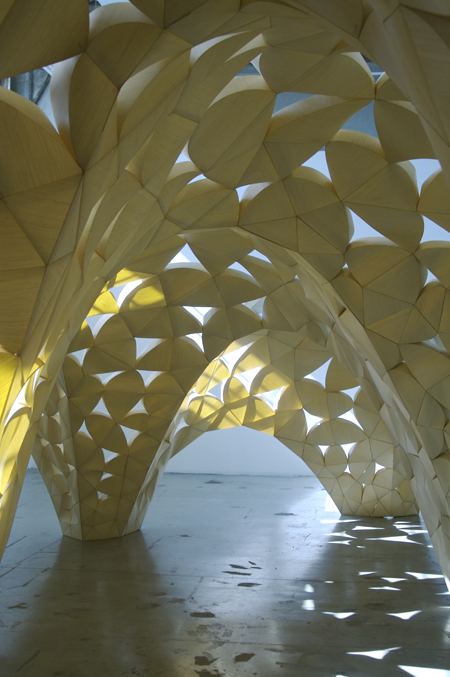
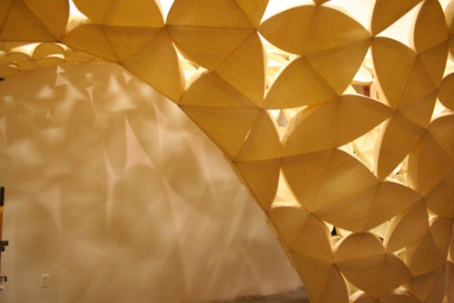
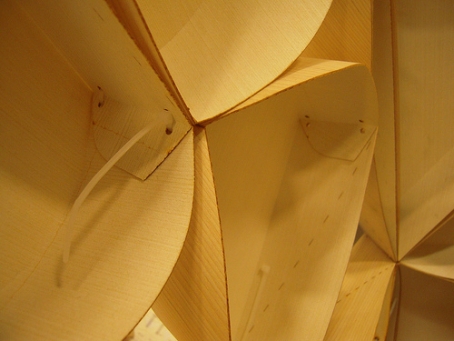
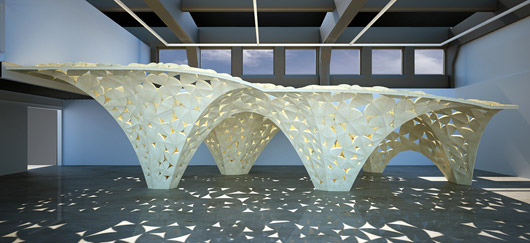
'Pavilion&Installation' 카테고리의 다른 글
| [ Ball-Nogues ] Maximilian's Schell, Materials & Applications, 2005 (2) | 2010.01.20 |
|---|---|
| [ Ball-Nogues ]Copper Droopscape (0) | 2010.01.18 |
| [ RUTA TURISMO RURAL SECANO INTERIOR ] LANDMARK (Escuela de Arquitectura, Universidad de Talca) (0) | 2010.01.16 |
| [ Ball-Nogues ] MOCA (0) | 2010.01.15 |
| [ LAVA ] Green Void (0) | 2010.01.14 |